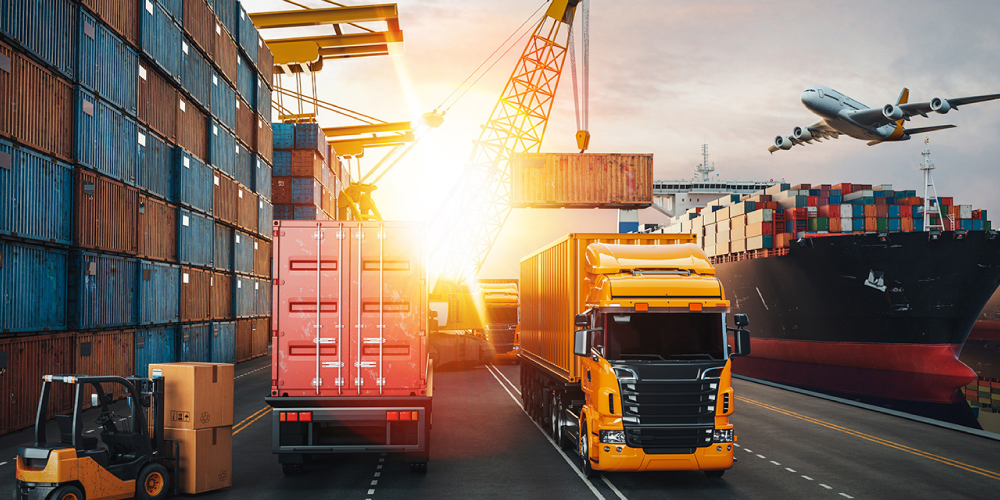Do you know what is the dream of every business owner worldwide? It is to see his products scattered on shelves worldwide, but the primary concern here is “how?” To many, sending their products to other countries seems daunting, but exporting facilities have made this task easy. However, this article is perfect for those wanting to be a tycoon and export goods internationally.
You may be amazed when you find out that there is an opportunity for you to reach a sizable worldwide audience. The International Trade Center predicts a staggering $25.3 trillion in global trade for 2022. This massive pie offers a slice for you, too! But before we proceed, let’s break down the exporting process into manageable steps.
Tips to Export Goods Internationally
Here is the time to see what process we should follow and what we should consider when we plan to export goods internationally. The first thing is to have a firm plan and awareness of the requirements. So, let us start by planning to export goods internationally!
1. Make an Effective Exporting Plan
Laying the framework is the first stage in our exporting adventure. We need a map with a clear export strategy, much like any excellent explorer. Before setting out on our tour, we must choose our target market.
2. Market Research
Market research is crucial for our success in exporting internationally. By understanding the target market, we can avoid costly mistakes. We’ll learn what products customers want, how much they’re willing to pay, and even how to advertise effectively. This helps us tailor our approach to each country, maximizing our chances of going global smoothly.
3. Product Assessment
Being careless regarding product assessment can become a red flag for exports and their reputation. So, ensure in the evaluation because it helps us understand if there’s a good fit for your offering in the target market.
Moreover, you must consider things like local regulations, competitor presence, and if there’s even a need for your product there. Identifying any adjustments needed, like modifying packaging or features, ensures your product competes effectively and complies with local requirements. This strategy is quite helpful in avoiding costly mistakes and prepares you for successful international sales.
4. Craft An Exporting Plan
It’s time to create your battle strategy or export plan now that you have a firm grasp of your target market and a suitable product for export. Here’s where you lay out your objectives, plan out your sales approach, and, most of all, allocate funds for the journey. Remember that extra expenses, such as shipping, insurance, and possible tariffs, are also associated with exporting. However, considering these from the start can help prevent unpleasant financial shocks later.
Fundamentals to Export Goods Internationally
Now that our strategy has become solid let’s dive into the specifics of exporting: how to move your goods from point A to point B. Here, we’ll tackle three key aspects: Incoterms, export documentation, and the wonderful world of logistics.
1. Finding the Right Incoterms
A clear contract for your foreign shipping is similar to finding the appropriate Incoterms. Incoterms, short for International Commercial Terms, actively define who is responsible for what during the export of goods. These globally accepted guidelines outline which party covers costs bears risks, and handles duties like loading, shipping, and customs clearance.
Moreover, we know precisely where our obligations end and yours begin when we choose the appropriate Incoterms, which helps to eliminate confusion and potential disagreements. This makes everything run more smoothly and guarantees that your items get where they’re going quickly.
2. Export Documentation
Let’s organize our documentation next. Exporting requires a balance of paperwork, which is equally necessary to ensure that your items are delivered across borders without incident. The commercial invoice is the main attraction here, providing information on the goods, their worth, and any applicable terms of sale.
However, it’s not a solo project. The packing list, which carefully lists every item in your shipment, and the certificate of origin, which confirms the country of manufacture, are included. You could also require extra documentation, such as export licenses or certificates of analysis, depending on the product and destination.
3. Logistics and Shipping
The exciting part is about to begin: launching your product! This is the role of logistics. Although shipping via air is the quickest choice, it is also the most expensive. However, sea freight is more cost-effective but requires more time. They determine the optimal option based on your product, urgency, and budget.
However, a professional suggestion is always to go with others! A reliable goods forwarder may alter everything when you work with them. These logistics specialists will handle the stern lifting to ensure your package gets through customs clearance and gets to its destination quickly.
Build Your Export Empire
So far, we’ve covered the essential steps for exporting. But there’s more to the story! Here are some additional
1. Finance Your Global Ambitions
Exporting may need to balance cash flows. It may take weeks or even months to get paid after you made the items and transported them out. How, then, do you close that gap? This is when looking into financing alternatives comes in handy. For example, letters of credit assure the buyer’s bank that you will be compensated when your cargo satisfies the specified conditions. Selling your receivables to a financial institution at a discount is one of your other possibilities, such as export factoring.
2. Market Your Masterpiece
Remember that old saying, “If a tree falls in the forest and no one’s around to hear it, does it make a sound?” The same applies to exporting. It doesn’t follow that consumers will become aware of your product because it is sold in a foreign nation. A marketing plan that is specific to your target market is a vitality.
Remember that cultural subtleties are crucial when using social media marketing to target a worldwide audience. For example, something that appeals to American viewers might need to work more effectively elsewhere.
3. Build Bridges
Only some things that go worldwide have to be done with others. Partnering with international distributors or agents can be a strategic move. They have the local expertise and connections to navigate the market landscape and help you reach your target audience more effectively.
Imagine having someone on the ground who understands the local regulations, cultural preferences, and even the best way to price your product for maximum impact. Building solid relationships with these partners is vital to your long-term exporting success.
4. Challenges We Encounter When Exporting Products
Although it seems wonderful, there may be difficulties when expanding your company overseas. It might not be easy to comprehend the laws of foreign nations. Consider the requirement for a separate label in one country and a particular sticker in another for your goods! Long-distance freight shipping may be costly and time-consuming.
Another obstacle may be cultural differences. Due to varying preferences or customs, something other than what sells well at home could be successful in another market. However, don’t worry! You may overcome these obstacles and succeed as an international exporter by carefully preparing and doing your research.
Last Words
A profitable strategy to increase the clientele and income of your company is to export goods internationally. You may manage the process by using the guidance provided in this article to handle anything from developing an export plan to choosing the ideal logistics partner. Remember that proper documentation, thorough market research, and a well-thought-out marketing plan are essential for success. Your ambition of exporting goods abroad might become a reality with careful preparation and a dedication to ongoing development.
Q. How can we find customers for exporting goods?
Use trade exhibitions, government tools, and internet marketplaces to find export buyers. Look into potential markets to find businesses that import comparable products. Moreover, social media can facilitate communication with prospective foreign clients.
Q. Which is the biggest exporter country?
With exports expected to reach an astounding $3.6 trillion in 2022, China is the largest exporter in the world. This indicates that the value of their exported items exceeded the combined GDP of several nations!
Q. What is MEP?
One tool used by governments in trade policy to determine the lowest price at which a product may be exported is the Minimum Export Price (MEP). Deterring exports and ensuring that enough necessities, such as food, are offered at fair rates on the home market are the two key objectives.
Q. Which paperwork is needed when exporting products abroad?
Documentation that is both commercial and regulatory is a requirement for exporting. The necessities include an itemized list of goods, a packing list that details the contents, and a certificate of origin that verifies the place of manufacture. Additional paperwork, such as licenses or inspections, may also become required depending on the items and destination.





